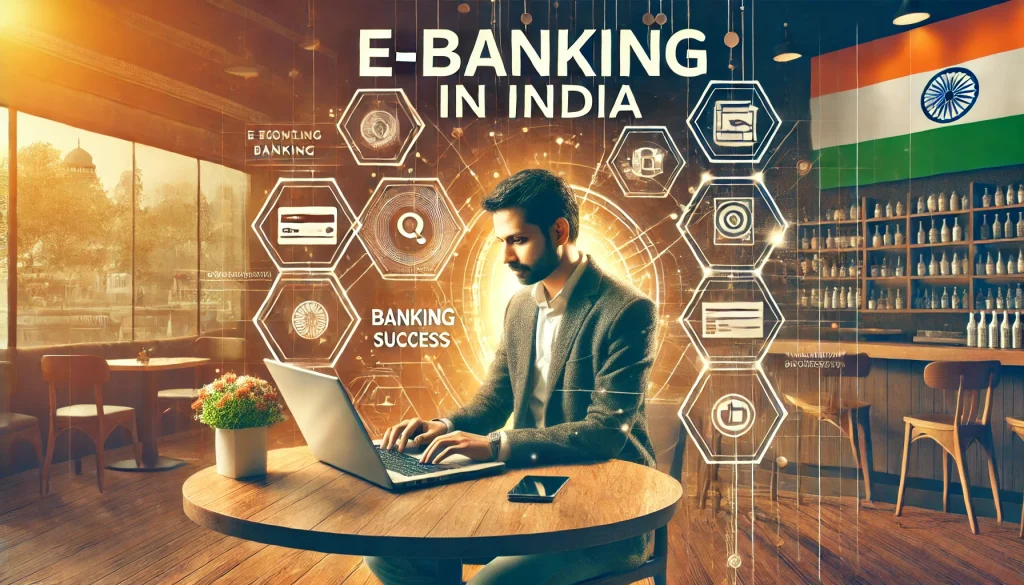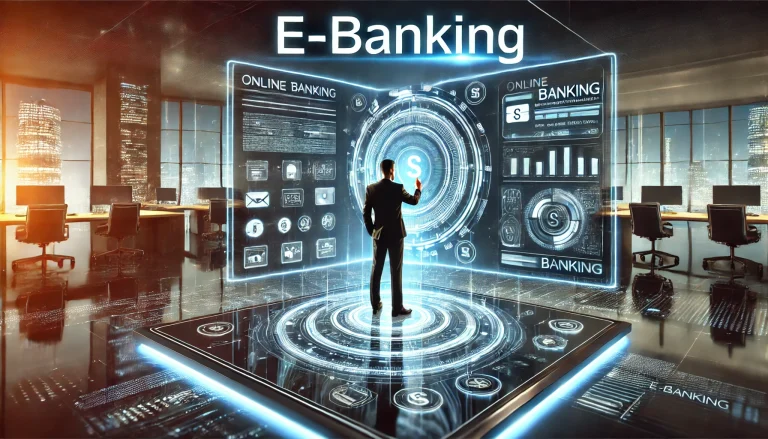E-banking, by its very name, has become the bedrock of modern financial services in this digital age by revolutionizing the ways through which people conduct their day-to-day or business banking operations. It makes banking easier, efficient, and safe, without physical branch visits because the development of technology is fast-paced. E-banking generally refers to electronic transactions that replace manual financial dealings as customers access their bank accounts, pay bills, and perform other banking transactions at any given time from anywhere.
E-Banking Definition
Also known as electronic banking, e-banking is the concept by which people apply electronic means for banking services or transactions via the Internet. The modern banking concept allows a person to perform lots of financial activities ranging from money transfers, checking of account balances, and settlement of bills, among others through an electronic platform.
The Evolution of E-Banking
Through technological advancements and the rising demand for easy-to-use bank solutions, developments in e-banking tend to advance toward providing state-of-the-art sophisticated online platforms. These have changed the financial service landscape from the original ATM services to more viable user-friendly banking services.
Types of E-Banking
E-banking offers several types of services, each designed to cater to different financial needs. The most common types of e-banking include:
1. Internet Banking
Internet banking is the facility in which customers can conduct their banking through the websites of the bank, thereby offering a number of facilities such as transfers, bill payments, loan applications, and account management.
2. Mobile Banking
Mobile banking is an access service of a cell phone or tablet to banks’ services. Here, through the application on a mobile device, customers can carry out account management, transfers, and other transactions from a distance.
3. ATM Services
Automated Teller Machines (ATMs) enable customers to withdraw cash, check account balances, and perform other basic transactions without visiting a bank branch.
4. Telephone Banking
Telephone banking allows customers to conduct banking transactions via phone calls. This service is often used for balance inquiries, fund transfers, and bill payments.
5. SMS Banking
SMS banking provides banking services through text messages, allowing customers to receive account updates and perform simple transactions like balance checks or fund transfers.
6. Electronic Fund Transfer (EFT)
EFT is an electronic service that transfers funds between accounts and can be from the same bank or a different bank. Included in some EFT services are direct deposits and wire transfers, but also other types of electronic payment.

Advantages and Disadvantages of E-Banking
While e-banking offers numerous benefits, it also presents certain challenges. Here’s a look at the advantages and disadvantages of using e-banking services.
Advantages of E-Banking
- Convenience: The facility offers customers the ease of access to banking services 24/7 from the comfort of their homes or even when on the move without necessarily visiting a physical branch.
- Time-Saving: E-banking saves a lot of time to a large extent in accomplishing one’s banking needs. Payments, transfers, and account management are executed within seconds.
- Cost Saving: It saves banks and customers money because the need for physical infrastructure and paper is reduced in an e-banking environment. Another saving cost is transportation to and from the bank for a customer.
- Enhanced Security: The new applications of e-banking have different security features such as encryption, two-factor authentication, and biometric verification for transactions.
- Instant transaction: Updates are provided to customers, which permits them to keep track of accounts always, thereby being on the lookout for any suspicious transactions.
- Paperless Transactions: The use of e-banking also reduces dependence on paper because this helps in being environmentally friendly by minimizing waste and accompanying this with other by-products.
Disadvantages of E-Banking
- Technical Issues: The sites of e-banking may be closed for some time on account of technical problems or maintenance works and hence restrict the access of customers to their accounts.
- Security risks: Though security measures are like fortresses, electronic banking is still vulnerable to attacks from hackers, phishing, and identity theft through the internet and other routes, and it may lead to loss of finance.
- Digital Divide: Not all customers have technology or internet services, which are necessary for furthering e-banking activities. This is particularly difficult for older generations or those people living in rural areas.
- Personal Contact: Any customer who is accustomed to going to a bank needs personal contact. For most of the transactions, e-banking does not allow this and seems impersonal, even when harder transactions are required for solutions needed by that customer, where step-by-step assistance is required.
E-Banking in India
E-banking has grown dynamically in India along with both governmental policies enforcing digitalization as well as the growing penetration of smartphones and internet connectivity. Hence, Indian banks found big utility in e-banking reaching many more population groups, and offering better services in the cities as well as rural areas of the country.
Growth of E-Banking in India
In the last few years, the Indian Government’s initiatives like Digital India and Pradhan Mantri Jan Dhan Yojana have encouraged the shift toward a no-cash economy and thus will spur the growth of e-banking. The RBI has also established a regulatory framework, which ensures the safety and efficiency of the platforms developed for providing e-banking services.
Popular E-Banking Platforms in India
Actually, some of the most used e-banking platforms in India today are Unified Payments Interface (UPI), Internet Banking services by major banks like jk e banking, uco e banking, State Bank of India, and HDFC Bank, and also mobile wallets like Paytm and Google Pay. Moreover, these channels happen to facilitate instant payment, transfer of funds, and hassle-free management of finances.
Challenges Faced by E-Banking in India
Although e-banking has been in vogue on a highly massive scale in India, it still holds challenges due to the limited level of digital literacy of some populations and the risks associated with cybersecurity. Another important aspect emphasized by policymakers is the rural population’s access to e-banking services.
Conclusion
E-banking indeed revolutionized the financial industry, providing it with something heretofore unprecedented—convenience, security, and efficiency in equal measure for consumers and businesses alike. However, as with every advance in technology, there is always a corollary. As more and more people sign up for e-banking services, their banks and regulatory bodies need to team up to strengthen these transaction platforms and bridge the digital divide.
E Banking FAQs
What is e-banking?
E-banking refers to the use of electronic systems to perform banking transactions and access banking services through the internet or mobile devices.
Is e-banking secure?
Yes, e-banking is generally secure, but it is important for users to follow best practices, such as using strong passwords and enabling two-factor authentication, to safeguard their accounts.
What are the different types of e-banking services?
The main types include internet banking, mobile banking, ATM services, telephone banking, and SMS banking.
Can I access e-banking services without the internet?
Yes, some e-banking services like telephone banking and SMS banking can be accessed without the internet.
What are the main advantages of e-banking?
The key advantages include convenience, time savings, cost-effectiveness, and enhanced security.


